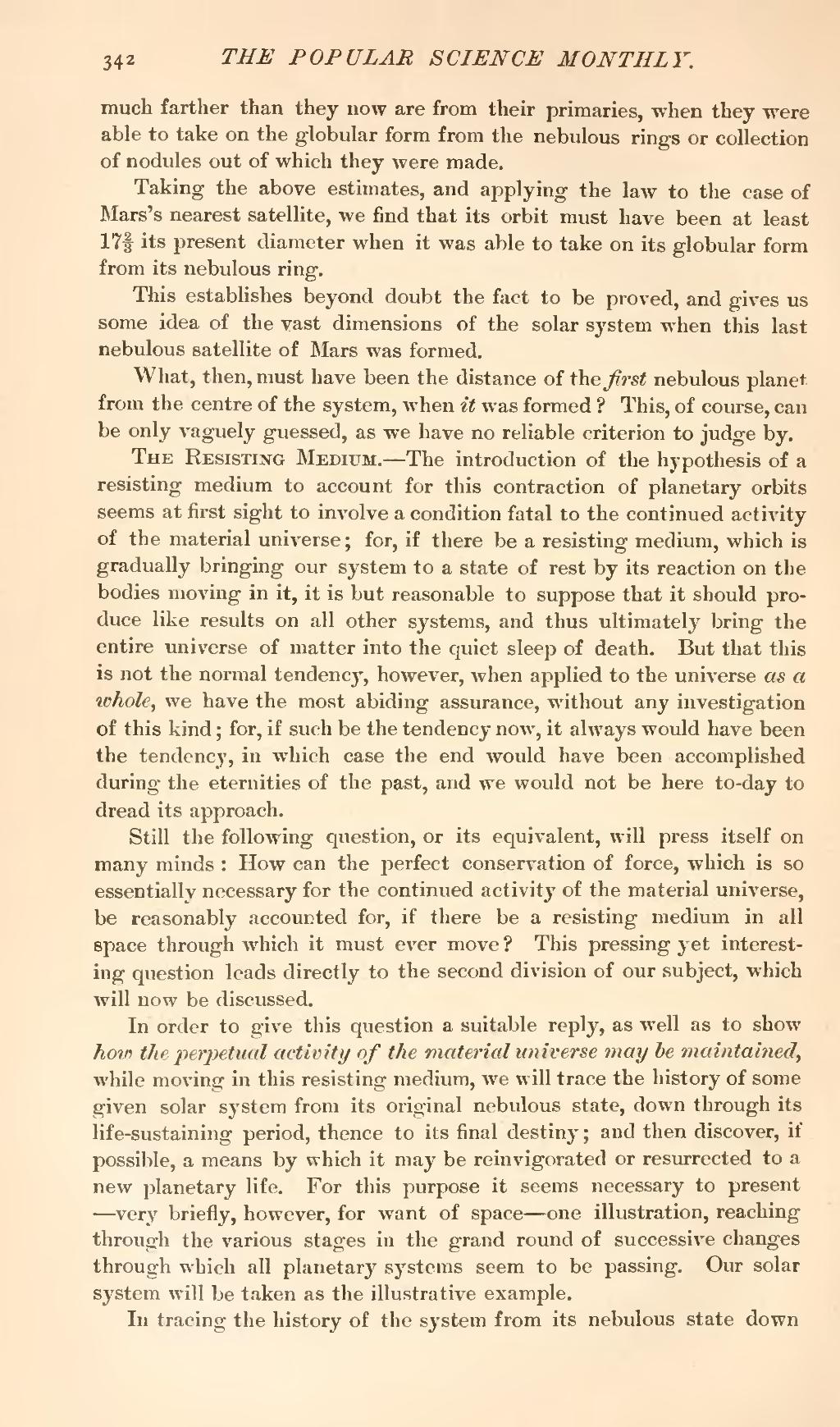much farther than they now are from their primaries, when they were able to take on the globular form from the nebulous rings or collection of nodules out of which they were made.
Taking the above estimates, and applying the law to the case of Mars's nearest satellite, we find that its orbit must have been at least 1723 its present diameter when it was able to take on its globular form from its nebulous ring.
This establishes beyond doubt the fact to be proved, and gives us some idea of the vast dimensions of the solar system when this last nebulous satellite of Mars was formed.
What, then, must have been the distance of the first nebulous planet from the centre of the system, when it was formed? This, of course, can be only vaguely guessed, as we have no reliable criterion to judge by.
The Resisting Medium.—The introduction of the hypothesis of a resisting medium to account for this contraction of planetary orbits seems at first sight to involve a condition fatal to the continued activity of the material universe; for, if there be a resisting medium, which is gradually bringing our system to a state of rest by its reaction on the bodies moving in it, it is but reasonable to suppose that it should produce like results on all other systems, and thus ultimately bring the entire universe of matter into the quiet sleep of death. But that this is not the normal tendency, however, when applied to the universe as a whole, we have the most abiding assurance, without any investigation of this kind; for, if such be the tendency now, it always would have been the tendency, in which case the end would have been accomplished during the eternities of the past, and we would not be here to-day to dread its approach.
Still the following question, or its equivalent, will press itself on many minds: How can the perfect conservation of force, which is so essentially necessary for the continued activity of the material universe, be reasonably accounted for, if there be a resisting medium in all space through which it must ever move? This pressing yet interesting question leads directly to the second division of our subject, which will now be discussed.
In order to give this question a suitable reply, as well as to show how the perpetual activity of the material universe may be maintained, while moving in this resisting medium, we will trace the history of some given solar system from its original nebulous state, down through its life-sustaining period, thence to its final destiny; and then discover, if possible, a means by which it may be reinvigorated or resurrected to a new planetary life. For this purpose it seems necessary to present—very briefly, however, for want of space—one illustration, reaching through the various stages in the grand round of successive changes through which all planetary systems seem to be passing. Our solar system will be taken as the illustrative example.
In tracing the history of the system from its nebulous state down

